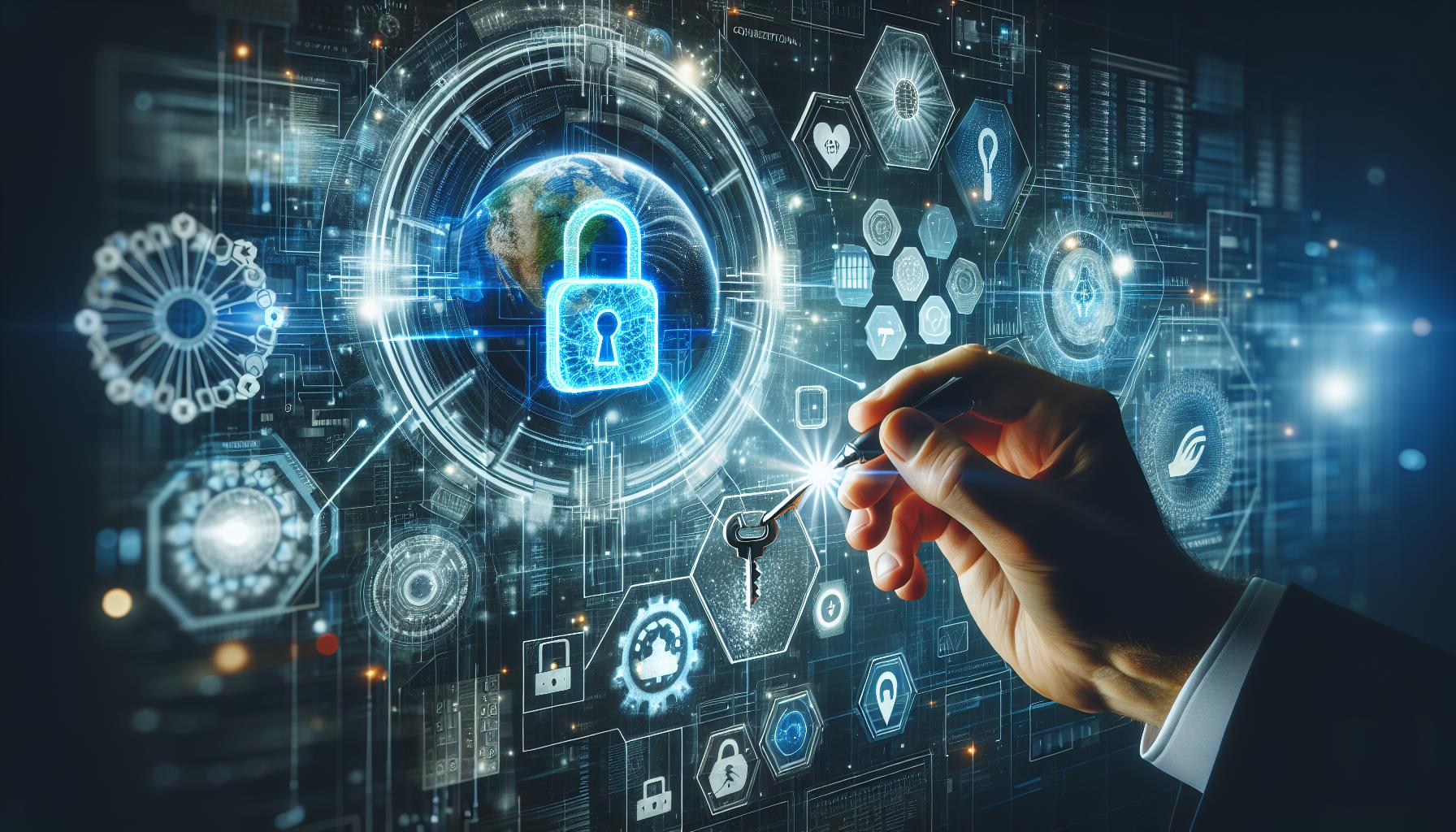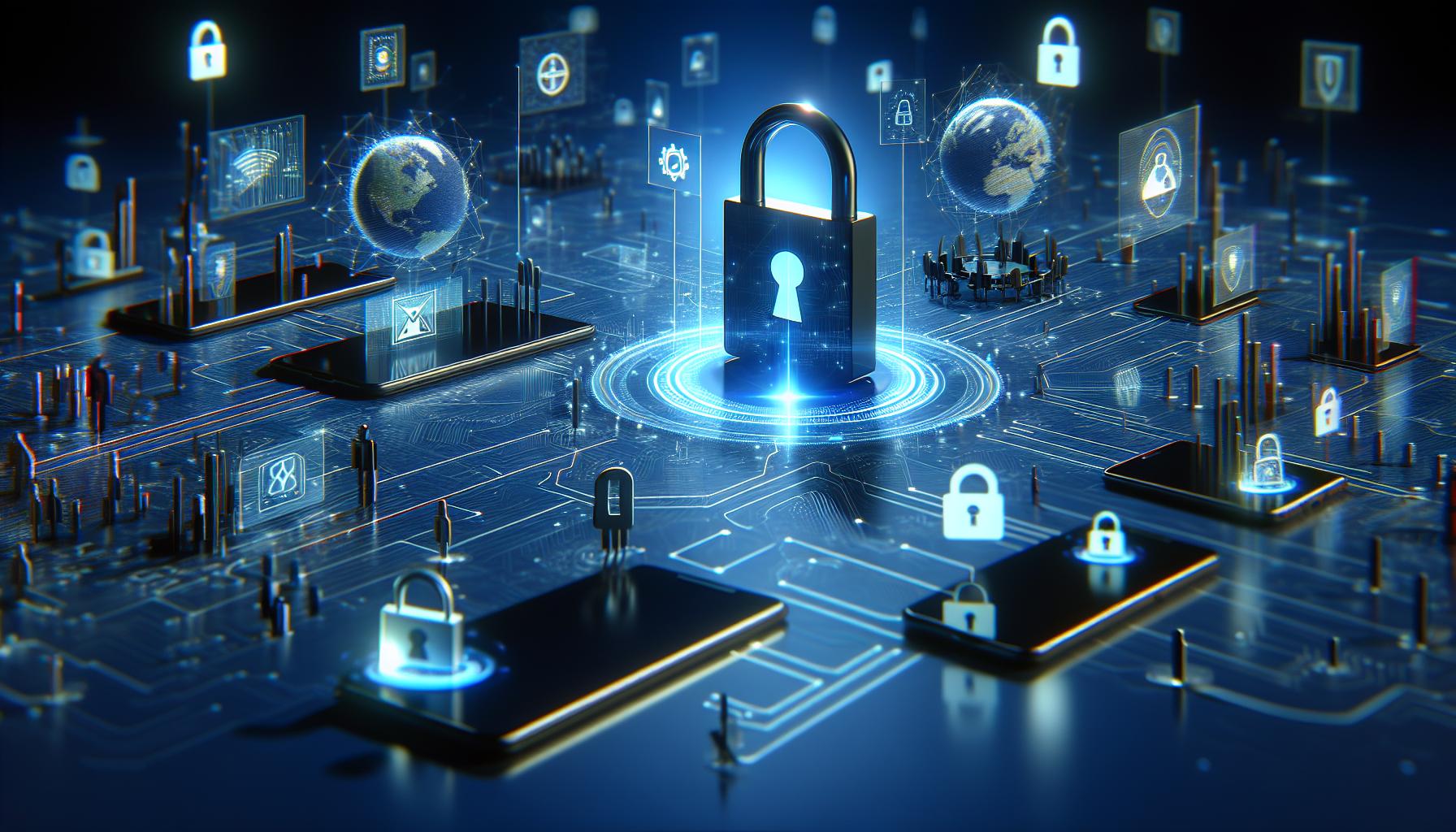as AI tools increasingly shape our daily lives, questions about their security and privacy loom large.with Chai AI gaining popularity, itS crucial to understand how it safeguards your data. This article explores the essential security features in Chai AI, ensuring users can engage with confidence and peace of mind.
Understanding Chai AI: What it is indeed and How it effectively works
Artificial intelligence is transforming the way we interact with technology, and Chai AI stands at the forefront of this revolution. Designed to create engaging conversational experiences, Chai AI blends advanced machine learning with intuitive user interfaces, allowing users to communicate seamlessly with AI-driven chatbots.
How Chai AI Operates
at its core, Chai AI leverages sophisticated algorithms to understand and generate human-like text responses. The model is built on natural language processing (NLP), which enables it to interpret user queries and craft responses that feel organic and relevant. Here’s a breakdown of the essential components of Chai AI:
- Data Training: Chai AI utilizes vast datasets to learn language patterns, idioms, and contextual relevance.
- Contextual Understanding: With the ability to remember past interactions within a conversation, it offers coherent and contextually appropriate responses.
- Feedback Loop: Continuous learning from user interactions allows Chai AI to improve over time, refining its accuracy and responsiveness.
Security and privacy Features
One of the prevalent concerns in AI technology is security and privacy,especially when handling personal data. Chai AI prioritizes these aspects by implementing robust measures to protect user facts. The system is designed to minimize data retention and enforces strict access controls. Below is a summary of key security features:
| Security Feature | Description |
|---|---|
| Data Encryption | All user data is encrypted both in transit and at rest, ensuring that sensitive information is secure from unauthorized access. |
| Anonymous Interaction | Users can interact with Chai AI without providing personally identifiable information (PII), enhancing privacy. |
| Regular Security Audits | Chai AI undergoes continual security evaluations and updates to safeguard against vulnerabilities. |
By integrating these security features, Chai AI not only enhances user experience but also builds trust among its user base. Understanding the operational framework and security measures of Chai AI can reassure users while engaging with this innovative technology. The question ‘Is Chai AI Safe? Security and Privacy Features Explained’ achieves greater clarity thru a detailed examination of its capabilities and protective measures.
The Importance of Security in AI: Key Concepts and Challenges
The crucial Role of Security in AI
As artificial intelligence continues to permeate various facets of our lives, the underlying security concerns are becoming increasingly evident. In a world where AI applications like Chai AI are designed to engage users in dynamic and personalized interactions, safeguarding data and ensuring privacy must take precedence. Understanding the significance of security in AI not only protects users but also fosters trust in these technologies.
A pivotal aspect of AI security revolves around the protection of personal information. With robust AI chatbots processing volumes of user data, ensuring that this data remains confidential is paramount. AI systems can be vulnerable to various threats, including data breaches, misuse of personal information, and manipulation by malicious entities. The necessity to implement strong security protocols can’t be overstated; they are essential in mitigating these risks. Some key elements of AI security include:
- Data Encryption: Encrypting data at rest and in transit to protect it from unauthorized access.
- Access Controls: Implementing strict access controls and authentication mechanisms to limit who can interact with sensitive data.
- Regular Audits: Conducting frequent security audits and vulnerability assessments to identify and rectify potential weaknesses.
- User Awareness: Educating users on best practices for maintaining privacy while interacting with AI systems.
Challenges Faced in AI Security
Despite the emphasis on security, challenges abound in ensuring the privacy of AI-enhanced applications like Chai AI. One important hurdle is the complexity of targeting potential vulnerabilities within hyper-connected networks. For instance, even a minor flaw in programming can expose users to significant risks, from data leaks to more nefarious attacks aimed at tactic manipulation of information.
Moreover, as AI models evolve, so do the techniques employed by malicious actors. Staying ahead of these evolving threats requires continuous innovation in security practices. Monitoring tools must adapt in real-time, utilizing advanced detection algorithms to combat sophisticated attacks. The importance of building resilient AI systems that can respond to potential security threats swiftly cannot be overstated.Below is a brief comparison of common security challenges in AI:
| Challenge | Description |
|---|---|
| Data privacy | Ensuring that personal information is kept private and secure against unauthorized access. |
| System Vulnerability | Identifying and addressing weaknesses that could be exploited by cybercriminals. |
| regulatory Compliance | Navigating the myriad of laws and regulations surrounding data protection. |
| User Trust | Building and maintaining user confidence in AI technology and its security measures. |
Effective security measures are essential components of any AI system, including Chai AI, ensuring both user safety and system integrity.As the dialogue around the safety of AI applications grows, understanding these key concepts and challenges will be vital for users, developers, and stakeholders alike.
data Privacy in Chai AI: How Your Information Is Handled
Understanding Data Privacy in chai AI
In an age where data breaches and privacy concerns dominate headlines, users are naturally cautious about how their information is handled by artificial intelligence platforms like Chai AI. This AI-driven platform prioritizes user privacy by implementing robust data protection measures that not only comply with regulations but also foster trust. Unlike many applications,Chai AI adopts a proactive approach,embodying the principle that privacy should be a core component of its operations.
One of the key commitments in ensuring data privacy is the concept of data minimization. Chai AI collects only the information necessary to deliver its personalized services. This careful selection of data helps mitigate risks associated with large data pools, reducing the potential for exploitation. Users can engage without the fear of their personal data being misused or sold, which is increasingly rare in today’s technology landscape.
Privacy-By-Design Framework
Chai AI embodies the philosophy of privacy by design, meaning that every aspect of the user experience is crafted with privacy in mind.Systems are built with default settings favoring user privacy, minimizing data exposure, and ensuring activities are encrypted. The implementation of strong encryption,similar to what is outlined in IBM’s data protection strategies,helps secure user interactions with the AI,thereby safeguarding sensitive information in transit and at rest [[2]].
- Encryption: Chai AI utilizes advanced encryption methods to protect user data.
- Data Access: Only authorized personnel have access to sensitive information, significantly reducing the risk of unauthorized access.
- User Control: Users are provided with options to manage their data, ensuring they retain control over their interactions.
Given the rising scrutiny around data privacy, platforms like Chai AI serve as an example of how commitment to user privacy can be realized through actionable steps. By prioritizing openness and security,Chai AI not only delivers innovative AI experiences but also builds robust trust with its users while addressing essential questions about safety and confidentiality in the digital realm.
Encryption and Secure Communication: Safeguarding Your Interactions
Did you know that a single lapse in communication security can lead to devastating breaches of personal information? In the digital age, safeguarding your interactions is more crucial than ever. With platforms like Chai AI revolutionizing how we communicate, understanding the intricacies of encryption and secure communication becomes essential in the ongoing discussion about weather Chai AI is safe.
The Role of Encryption in Secure Communication
Encryption acts as a protective barrier for data in transit, ensuring that only authorized parties can access the information being exchanged. Chai AI employs state-of-the-art encryption protocols that secure every conversation and transaction.This means that even if a malicious actor intercepts the data, it remains unreadable without the appropriate decryption keys.Here are some key points on how encryption enhances security:
- End-to-End Encryption: All data transmitted within the Chai AI platform is encrypted, meaning your thoughts and queries remain confidential between you and the AI.
- Data Integrity: Encryption not only secures your communication but also verifies that it hasn’t been altered in transit, ensuring you receive trustworthy responses.
- Regulatory compliance: adhering to strict data protection laws,Chai AI’s encryption strategies are designed to meet regulatory requirements,further safeguarding user privacy.
secure Protocols and Their importance
In addition to strong encryption, the protocols used in communication platforms play a pivotal role in maintaining security.Chai AI implements secure communication protocols such as TLS (Transport Layer Security), which is widely recognized for its ability to establish secure connections over the internet. This reduces vulnerabilities, preventing potential threats such as man-in-the-middle attacks. By employing these protocols, the platform enhances user trust and confidence when interacting with the AI.
Real-World examples of Effective Secure Communication
Consider a scenario where a user discusses sensitive topics with Chai AI.Utilizing robust encryption and secure protocols ensures that personal insights, preferences, and sensitive data shared in conversations are inaccessible to any unintended parties. As an example, when you inquire about mental health resources or financial advice, rest assured that your inquiries remain private and protected.
| Security Feature | Description |
|---|---|
| End-to-End Encryption | Secures messages so only sender and receiver can read them. |
| Secure Protocols (TLS) | Establishes encrypted connections for all data exchanges. |
| Data Anonymization | Ensures user’s identity is hidden during data processing. |
| Regular Security Audits | Periodic checks to identify and patch vulnerabilities. |
Emphasizing these security measures within the Chai AI framework highlights the platform’s commitment to maintaining a safe communication environment. Understanding these features empowers users to make informed decisions regarding their interaction with AI,reaffirming the question: is Chai AI safe for your confidential conversations?
User Controls and Permissions: Empowering You with Choices
Exploring the landscape of user controls and permissions is essential in understanding how to safeguard personal data and enhance user experience. In today’s digital age, where interactions with AI like Chai AI are becoming commonplace, knowing how to manage privacy settings and controls can make all the difference. Various platforms offer a range of options for users to dictate how their information is shared and used, allowing for a tailored experience that suits individual preferences.
To navigate effectively through the intricate web of settings and permissions,consider the following options that many AI platforms,including Chai AI,provide:
- Privacy Settings: Users can often adjust who sees their activity or even limit the information that the AI can access,such as contacts or personal files. Regularly reviewing these settings is crucial.
- Data Usage: Understand what data is utilized by the AI and for what purpose.Keeping track of data requests allows you to make informed decisions about how you interact with the platform.
- User Verification: Enabling two-factor authentication or other security measures enhances your account’s safety, ensuring only authorized access.
Implementing these controls not only enhances personal security but also builds trust with AI technologies. Users of Chai AI can leverage its features to ensure they are only sharing information that aligns with their privacy comfort levels. For instance, if a user has concerns about third-party access, they can customize settings to limit connectivity, ultimately leading to a personalized and secure user experience.In light of the pressing questions around security in the realm of AI, it’s essential to stay informed about the options available.Regularly checking for updates on security features and privacy protocols can lend peace of mind and assurance that the benefits of using AI technologies, such as Chai AI, are reaped without undue compromise to personal data.
Evaluating Chai AI’s Compliance with Data Protection Regulations
Engaging with artificial intelligence often raises valid concerns about the handling and protection of personal data. For users pondering the question of whether Chai AI is safe, understanding its compliance with data protection regulations is crucial in determining how well it safeguards user information.
Framework of Compliance
Chai AI operates under stringent compliance with global data protection regulations, including the General Data Protection Regulation (GDPR) and the California Consumer Privacy Act (CCPA). These regulations are designed to offer robust protections for personal data and ensure that users have control over their information. Chai AI is committed to being clear about data collection, usage, and storage practices, aligning with these legislative frameworks to fortify user trust.
Key Compliance Features
The platform has instituted several key features to adhere to these regulations effectively:
- Data Minimization: Chai AI collects only the data essential for user-interaction, minimizing potential exposure.
- User Consent: Consent is sought upfront, ensuring that users understand and agree to data practices before any information is collected.
- Right to access and Portability: Users can request access to their data and, where applicable, transfer this data to another service.
- Data Deletion Capabilities: Users have the right to request the deletion of their data at any moment, enhancing personal autonomy over information.
Data Protection Measures
Chai AI implements advanced technical measures to protect user data against unauthorized access and breaches. These measures include encryption protocols, secure data storage solutions, and regular audits. The commitment to maintaining a high level of security is reflected in the company’s structured policies aimed at responding to potential data breaches swiftly and effectively.
| Regulation | Chai AI Compliance |
|---|---|
| GDPR | Full compliance, including rights to access, deletion, and data portability |
| CCPA | Transparency in data collection, user consent mechanisms in place |
By prioritizing compliance with these regulations, Chai AI not only enhances its reputation regarding privacy and security but also empowers users to make informed decisions about their engagement with this innovative platform. every interaction is underpinned by a commitment to protect user data, assuring those who are wary of potential vulnerabilities that their privacy is taken seriously.
Ethical Considerations: Balancing Innovation and Responsibility
Finding the balance Between Innovation and Ethical Responsibility
As artificial intelligence continues to evolve, technologies like Chai AI promise new levels of personalization and interactivity, but they also raise critical ethical questions. One of the core responsibilities of developers and researchers working on AI solutions is to ensure that innovation does not come at the expense of user safety and privacy. Ethical considerations must be ingrained in every step of the development process, a principle that is increasingly essential as users demand transparency and accountability.
To effectively balance innovation with ethical responsibility, developers should prioritize informed consent and user awareness. This involves clearly communicating what data is being collected, how it will be used, and the potential risks involved. As a notable example, if Chai AI utilizes user conversations for training its algorithms, individuals should be fully informed and given the option to opt-out. Implementing robust privacy policies and maintaining open channels for user feedback are essential steps in fostering trust and ensuring that ethical standards are upheld.
Strong data protection measures are also crucial in managing ethical considerations. Companies must deploy advanced security protocols to protect sensitive user information from breaches or misuse. This includes encryption, secure storage solutions, and regular security audits to identify and rectify vulnerabilities. By prioritizing user security, developers not only comply with ethical guidelines but also enhance the overall reliability of AI technologies like Chai AI.
Ultimately,the ethical landscape in AI development requires continuous dialogue and reassessment. Stakeholders must engage with users and experts in ethics to navigate the complexities of technological advancements responsibly. By embedding ethical principles within the innovation process, AI applications can thrive while safeguarding user rights, thus answering the pressing question: Is Chai AI Safe? Security and Privacy Features Explained.
The Role of Transparency in Enhancing Trust in AI Systems
The Trust Factor in Transparency
In an era where artificial intelligence technologies are prevalent and influential, the question of trust becomes paramount. One of the cornerstones of building trust in AI systems is transparency. When users understand how AI operates,they are more likely to perceive it as trustworthy. Transparency encompasses clarity regarding the algorithms used, the data processing methods employed, and the explicit criteria for decision-making involved in systems like Chai AI. According to research, a commitment to transparency not only enhances user confidence but also encourages responsible use of these technologies, safeguarding against misuse and fostering constructive engagement with AI solutions [[1](https://www.sciencedirect.com/science/article/pii/S0950584923000514)].
Why Transparency Matters
The importance of transparency in AI development cannot be overstated. It ensures that organizations remain accountable for their systems. Consider the implications of an AI application making a critical decision without clear guidelines or explanations.Users may feel uneasy about relying on technology that operates in a ”black box” manner,as they have no insight into its processes. Clear transparency practices can take various forms, such as open communication regarding data sources, comprehensive documentation, and user-friendly interfaces that demystify the AI’s functionality. This practice not only builds user trust but also aligns AI systems like Chai AI with ethical standards, making them more socially acceptable [[2](https://www.geeksforgeeks.org/what-is-ai-transparency/)].
Implementing Transparency Strategies
To enhance transparency, organizations can implement several strategies:
- offer Clear Documentation: Provide easy-to-understand documentation that explains how algorithms work and how decisions are made.
- Utilize Explainable AI Techniques: Employ methods that allow users to see the rationale behind AI predictions and actions, which is especially critical in high-stakes scenarios.
- Engage with Users: Facilitate open conversations with users about their concerns and experiences, fostering an environment of feedback and improvement.
- Regular Audits: Conduct regular audits of AI systems to ensure compliance with transparency norms and ethical guidelines.
By prioritizing these practices, AI developers can transform user perceptions, ensuring that systems like Chai AI are regarded not just as tools, but as reliable partners invested in user welfare. This proactive approach not only caters to user needs but solidifies organizational integrity, reinforcing the notion that AI technologies can be both advanced and trustworthy [[3](https://www.ibm.com/think/topics/ai-transparency)].
Future-Proofing Your AI Experience: Adapting to Evolving Threats
Adapting to the Future of AI Security
As the digital landscape evolves, so do the threats it harbors.With AI technologies like Chai AI becoming increasingly integral to our online experiences, understanding and adapting to these evolving risks is vital. Cybersecurity challenges grow more sophisticated, but leveraging innovative tools can provide robust defenses. It’s essential to remain vigilant and proactive about security and privacy features that safeguard your engagements with AI platforms.
Key strategies for Enhanced Security
To future-proof your experience with AI,consider implementing the following strategies:
- utilize AI-powered Security Solutions: AI can effectively analyze user behaviors and identify potential threats before they materialize. As an example, integrating machine learning systems to monitor access patterns and flag anomalies can significantly enhance security protocols.
- Regular Software Updates: Keeping your AI applications up to date is crucial.Updates often include patches for vulnerabilities that cybercriminals may exploit, so ensure that you enable automatic updates for all software.
- implement Strong Authentication Methods: Utilize multifactor authentication (MFA) to add an extra layer of security. This makes unauthorized access much more tough, even if credentials are compromised.
- Educate Users on phishing and Malware: Training users to recognize the signs of phishing can mitigate risks associated with unsafe browsing practices. Awareness is your first line of defence.
Real-World Application of AI in Cybersecurity
The importance of AI in addressing cybersecurity threats cannot be overstated. Such as, recent studies indicate that nearly 60% of mobile threats arise from unsafe browsing habits, highlighting the need for enhanced security measures when using AI platforms such as Chai AI [[2](https://www.weforum.org/stories/2022/07/why-ai-is-the-key-to-cutting-edge-cybersecurity/)]. By employing machine learning techniques to analyze web traffic and user interactions, it becomes possible to filter out fraudulent activities and access unsafe sites, therefore maintaining a safer environment for users.
as you navigate the landscape of AI technologies, including Chai AI, being proactive about security isn’t merely advisable—it’s essential. Adapting to evolving threats through strategic measures ensures that your AI experience remains safe, secure, and resilient against continually advancing cyber threats.
to sum up
understanding the security and privacy features of Chai AI is essential for informed engagement with this innovative technology. We’ve delved into the robust encryption techniques that safeguard user data, the importance of data anonymization in enhancing user privacy, and the role of continuous monitoring in detecting vulnerabilities. Additionally, we highlighted the ethical considerations surrounding AI usage and the ongoing discourse about accountability and transparency.
As we continue to embrace the potential of AI, it is vital to remain vigilant about its implications. We encourage you to explore further into the evolving landscape of AI security measures and privacy policies. Engaging with these discussions not only enriches your understanding but also empowers you to advocate for responsible AI development. Stay curious and informed as we navigate this transformative era together!












